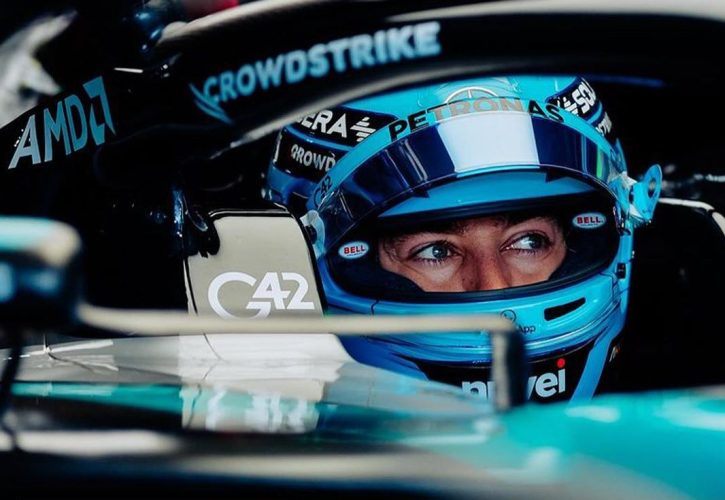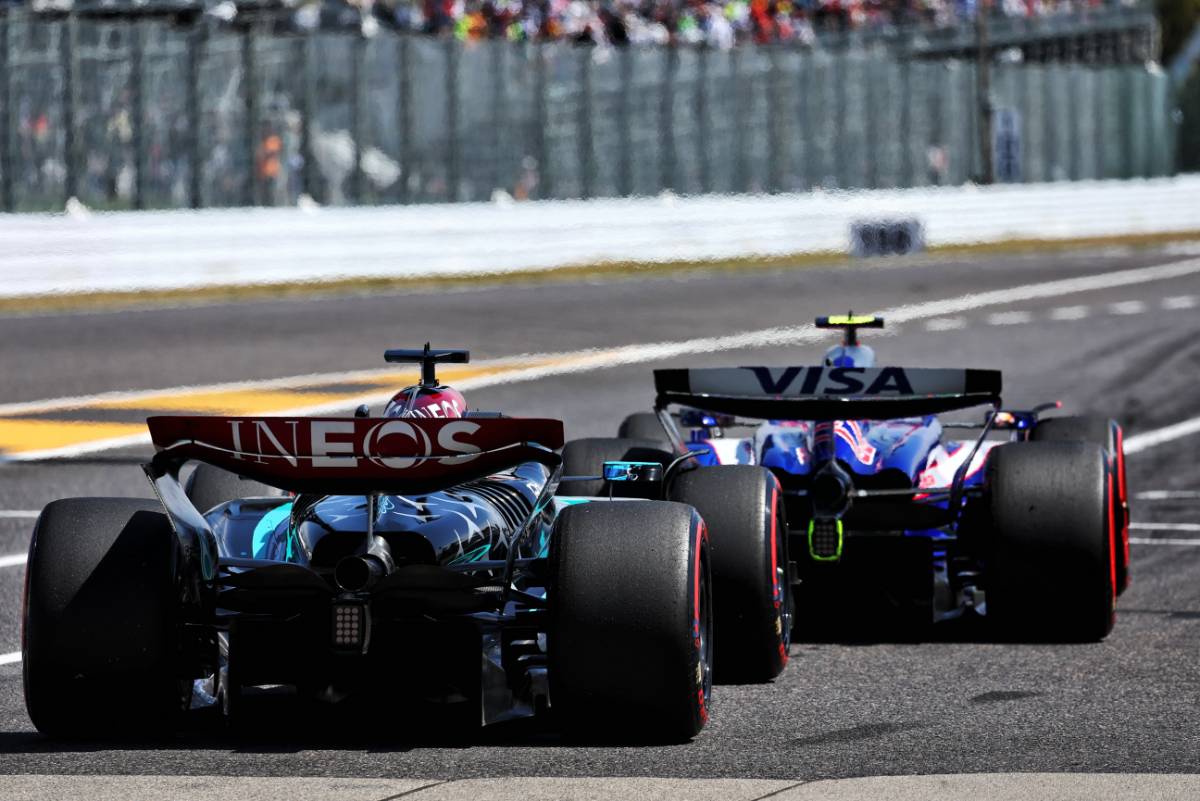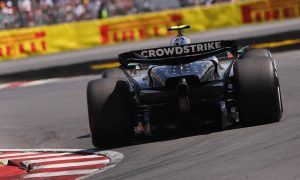
Mercedes F1 driver George Russell has raised concerns about a new consequence of F1 aerodynamics: turbulence strong enough to cause his helmet to shake violently.
Discussions have ramped up once again among teams and drivers over the expanded presence of dirty air in the wake of F1 cars, which is once again impacting overtaking.
Since the introduction of F1’s ground-effect regulations in 2022, that initially made cars easier to follow, ever-improving aerodynamic efficiency has once again produced a disruptive airflow at the rear of the cars.
The dynamic wake is taking its toll on the spectacle out on the track as drivers struggle to follow another car closely enough to attempt an overtaking move.
But Russel’s experience, which he highlighted to his team over the radio last weekend in Japan, sheds light on another, potentially safety-related issue for drivers.
Read also:
The phenomenon raises concerns about driver comfort and focus, especially considering the extreme G-forces and concentration required to compete in Formula 1.
"It's been a bit of a theme this year," explained the Mercedes driver, quoted by Motorsport.com.
"But I have had no problem with helmets in practice and qualifying, and then as soon as we get to the race with all the turbulence and cars around there's lots of buffeting and struggling a bit in this regard.
"The cars are definitely harder to follow recently than they have been in the past."

The return of overtaking pains in F1 has led to suggestions that the sport’s regulations have failed. But Mercedes technical director James Allison disputes the claim.
“I think that would be wholeheartedly unfair,” Allison said last month in Melbourne. “I think the competition is pretty tight in the midfield. There is overtaking that takes place.
“I think even on the data that we can see now, it's still better than the ‘21, ‘20 generations of cars.
“But especially the leading pack have developed the car in an extraordinary way that as you develop downforce, it is making it harder to follow.
“But I still think on all the metrics and all the data we can see, you're now getting closer than you were before as a result of things, which was an intention behind it.
“Whether they will improve in ‘25, no, I don't think so. There's no reason to think it will improve next year. And in ‘26, again, the rules are still being ratified as we speak, so it's hard to evaluate that.”
Keep up to date with all the F1 news via Facebook and Twitter






